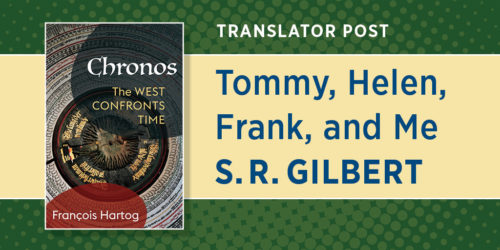Translating a Narcissist: The Italian Invert’s Companion Nancy Erber

The Italian invert and I have a history together. I first came across his story under the title “Roman d’un inverti” in the 1980s in a hot and stuffy Paris library as I was scrolling through the Archives d’Anthropologie criminelle, de médicine légale et de psychologie normale et pathologique, as many other researchers in French history and sexology have surely done. Reading about him again in Philippe LeJeune’s influential collection of eight gay men’s life stories, “Autobiographie et homosexualité en France au XIXe siècle,” inspired me to propose an English translation of these eight texts to my colleague William Peniston. This led to our book Queer Lives: Men’s Autobiographies from Nineteenth-Century France (2007) and even a French-language reworking, Bougres de vies: Huit homosexuels du XIXe siècle se racontent (2012). And more recently, some admirable detective work by Alain Pagès and Michael Rosenfeld has brought readers an even fuller picture of the man—whose name, sadly, remains unknown.
Over the years, my translation partners and editors and I have dubbed him “the Italian invert,” “the Italian man,” or simply “the invert.” Do I have a pet name for him myself? No. Do I like him? Not really. His misogyny; his antiquated (but historically consistent) theories about race, heredity, and gender; his homophobia and transphobia; and above all his narcissism make this longtime companion a bit of a bore. But his story is important, and we are lucky to have found its traces. As Zola noted, the Italian invert writes eloquently and passionately in a language that is not his own.
Do I have a pet name for him myself? No. Do I like him? Not really.
My job as a translator is to prioritize the author’s voice, to convey their original words’ intended meaning as best I can, and to put the prose into “natural” sounding English sentences and paragraphs. At the same time, I want to avoid anachronisms. For writing that deals with sexuality, that can be a tough call. Vernon Rosario’s foreword to the American edition of The Italian Invert: A Gay Man’s Intimate Confessions to Émile Zola makes this point more eloquently than I ever could. Read it if you haven’t yet done so!
Is a faithful translation a literal one? Not to me. At times I need to come up with an alternate image, a suitable idiomatic expression, or just a combination of words that will make sense to an English-speaking reader. In this case, since the author is not writing in his first language, his word choices are sometimes redundant or unclear. As we point out in a footnote, he uses the word “amitié” (friendship) for a variety of relationships, from the most superficial to the most intense, so we need to respect the context and foreground the author’s intentions as best we can.
Is a faithful translation a literal one? Not to me.
There are some helpful digital tools that I use to keep my own linguistic biases in check. For example, Google Books Ngram Viewer charts the frequency of words in print, so we can see whether an adjective like “veritable” was commonly used at the time our author was constructing his narrative. And if we think “veritable” sounds a bit antiquated in English or unsuited to the author’s intended meaning, we can consult any number of reliable online dictionaries to see their French to English translations in context and choose among “true,” “real,” “genuine,” and so on. We are fortunate that the French National Library has undertaken an enormous digitizing project, so that many medical dictionaries, forensic dictionaries, and general language dictionaries from specific time periods are easily accessible online—not to mention the slang dictionaries! Compared to other French medical and legal texts about sexology or the sex trade that I’ve translated, The Italian Invert is relatively free of argot.
For a translator, rendering the plethora of sex-related slang that might appear in a police report or doctor’s inventory (“persilleuses,” “tantes,” “chochottes,” “gommeux”) is a delicate question; the goal is to select culturally and historically appropriate equivalents. In describing the Italian invert’s sexuality for book proposals and other purposes, I’ve often used roundabout phrases like “same-sex attraction,” “same-sex passion,” or the general purpose “queer” in an attempt not to impose one particular identity on the author—but fortunately for me in this case our coeditor Michael Rosenfeld opted emphatically for the word “gay.” Short and to the point—unlike the author, who waxes lyrically for almost an entire page about a body part: “I don’t believe I’ve told you about my hands, which are truly superb, perhaps the loveliest part of me, except for my hair and my complexion. . . . ” And that’s just one example.
Nancy Erber is professor emerita of modern languages and literature at the City University of New York. She is the translator to The Italian Invert: A Gay Man’s Intimate Confessions to Émile Zola, edited by Michael Rosenfeld with William A. Peniston.








